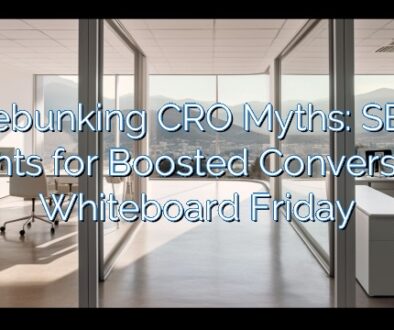40 Creative Business Cards: Memorable Designs That Make a Lasting Impact
The Art and Strategy of Business Cards in the Digital Age
Business cards have been the quintessential tool for professionals to exchange contact information for decades. However, as digital tools and technologies evolve, the role of the traditional business card is being reimagined. Are business cards obsolete in an era dominated by digital communication, or do they still hold tangible value in a business’s branding and networking strategy?
Integrating Digital Dynamics into Traditional Business Cards
The Evolution of Business Cards with Technology
Business cards are undergoing a renaissance due to the influence of technology. While the basic tenets of design and information sharing remain, technology has infused new life into these pocket-sized billboards. QR codes, for example, have transformed business cards into gateways to digital portfolios, video introductions, and even augmented reality experiences. The integration of Near Field Communication (NFC) chips has also elevated the humble business card to a tool that can seamlessly transfer information to smartphones with a simple tap.
The value of incorporating digital elements into business cards is immense. It fosters instant connectivity and engagement, offering deeper insights into a professional’s capabilities and services. This digital embrace extends the utility of the business card beyond a mere information carrier to a dynamic marketing asset.
Creating a Lasting Impression with Augmented Business Cards
The advent of augmented reality (AR) technology has given professionals the ability to transform their business cards into immersive experiences. By incorporating AR markers, a well-crafted business card can become a portal into a 3D showcase of your products, services, or personal brand. This interactive layer not only garners attention but also resonates longer with recipients, as the experience is far more engaging than a basic text and logo combination.
AR-enhanced business cards align with the growing emphasis on experiential marketing, leveraging the novelty and storytelling capabilities of AR to foster a memorable brand interaction. This digital sophistication positions professionals as forward-thinking and technologically adept, aligning with modern business practices and consumer expectations.
Leveraging Data and Analytics for Business Card Distribution
Understanding the Metrics of Networking
In the digital realm, everything is measurable, and business cards are no exception. Tracking the distribution and use of business cards can provide crucial insights into networking efficacy and lead generation. By utilizing digital tools that monitor QR code scans or NFC chip interactions, professionals can gauge the interest level of contacts, identify hot leads, and refine their follow-up strategies based on data.
This analytics approach turns networking into a strategic endeavor backed by quantifiable metrics. Such visibility into the performance of physical marketing materials was previously unattainable, demonstrating the transformative impact of digital technology on fundamental business practices.
Optimizing Follow-ups with Analytics-Driven Insights
The data gleaned from digital business cards not only informs professionals about “who” viewed their information but also “how” and “when.” These insights are crucial for optimizing follow-up efforts. Understanding the timing, for example, can help determine the best moment to reach out for a second engagement, aligning with the contact’s demonstrated interest.
Utilizing a CRM integration, professionals can automate the follow-up process, scheduling personalized communications triggered by card interactions. This efficiency underscores the merging of digital marketing automation with in-person networking, enhancing the potential for conversions and relationship-building.
The Continued Relevance of Design and Personalization
Maintaining Brand Identity in the Face of Digitization
Despite the push towards digitization, the design and physical aspects of business cards should not be neglected. A well-designed business card serves as a tangible manifestation of your brand identity. Thoughtful design elements, consistent branding, and quality materials make lasting impressions that can set a professional apart in a digital-centric world.
Customization and personal branding are critical considerations in ensuring business cards reflect the individual or business accurately. Tailoring the design to resonate with target audiences or reflect the specialized services offered turns the business card into a mini advertisement, reinforcing the professional’s unique selling proposition.
Storytelling through Visuals and Taglines
Business cards are an ideal canvas for telling a condensed version of one’s business story. A clever tagline, engaging visuals, or a unique value proposition encapsulated in the finite space of a card can speak volumes about a professional’s brand and ethos. It is the synthesis of creativity and brand messaging that makes business cards a crucial element of one’s marketing toolkit.
For creative professionals, the business card often serves as a portfolio piece, showcasing design skills or creative flair. Incorporating elements that hint at the professional’s area of expertise – be it through color schemes, typography, or imagery – allows the business card to communicate more about the brand than words alone could convey.
Networking in a Digital World: More than Just a Card Exchange
The Art of Connecting in the Modern Business Landscape
Networking in the digital age encompasses more than the exchange of contact information. It involves building a web of interconnected experiences across multiple platforms. Business cards, when paired with digital tools, can serve as the introductory node in this web.
Professionals should view business cards as a bridge between offline encounters and online relationships. They set the stage for further interactions, whether through professional networking platforms like LinkedIn, interactive digital portfolios, or follow-up virtual meetings. A business card is just the starting point of a potentially burgeoning professional relationship that spans both physical and digital arenas.
Cultural Contexts and the Global Outlook on Business Cards
It’s important to consider cultural nuances when discussing the exchange of business cards. In many cultures, particularly in Asia, the act of giving and receiving business cards is ritualistic and steeped in tradition. Adopting a digital-first approach does not negate the importance of understanding and respecting these cultural practices. Rather, it offers an additional layer of engagement for global professionals who must traverse various cultural landscapes.
By being mindful of these cultural contexts and incorporating digital flexibility, professionals can navigate international networking with sophistication and cultural sensitivity. This global outlook ensures that business cards retain their value as a universally recognized medium of professional introduction and respect.
Balanced Approach: The Symbiosis Between Digital and Traditional
Finding Harmony Between Physical and Digital Realms
The future of business cards lies in a balanced approach that harnesses the strengths of both physical and digital worlds. While the allure of digital features is strong, the tactile nature of a business card still holds a special place in professional settings. The key is to find harmony between the two, crafting a business card experience that leverages the tangibility of print with the expansiveness of digital.
This balanced approach offers professionals the flexibility to connect in whatever way their contacts prefer – instantly through a QR code or traditionally through a phone call or email. It also demonstrates adaptability and a holistic understanding of both traditional business etiquette and the rapid pace of digital innovation.
Personal Touch in an Increasingly Impersonal Digital Age
In a world where digital interactions can become impersonal, the personal touch of handing over a physical business card can distinguish a memorable encounter from a fleeting connection. It is that personal touch, that moment of eye contact and exchange, that can solidify the intent to engage further.
Combining personal interaction with digital capabilities creates a synergistic effect that enhances the networking experience. It shows an appreciation for the personal while acknowledging and embracing the efficiencies of the digital age. This duality is where the true power of the modern business card lies.
Conclusion: The Transformation of Business Cards
The evolution of business cards from simple paper rectangles to complex, multi-dimensional networking tools reflects the transformative power of digital technology in the business world. As professionals seek to make meaningful connections in an ever-expanding digital landscape, the fusion of traditional and innovative elements in business cards demonstrates their continued relevance.
By integrating technological advancements, harnessing the power of data analytics, and maintaining a strong design focus, business cards can serve as a vital component of a comprehensive branding and networking strategy. The modern business card is not just a means to share contact information, but a presentation of one’s professional image and a bridge to future opportunities.
In an increasingly connected world, the business card remains a potent symbol of personal connection and professional intent. While digital tools offer new pathways for interaction, the value of the physical card endures, testament to the power of a simple, well-crafted object imbued with the potential for business growth and personal connection.
Looking to explore the potential of modern business cards for your professional endeavors? Book a 15-minute call with Alex Casteleiro at https://reach.alexcasteleiro.com to discover how you can elevate your networking game!
FAQs
How can AI enhance the effectiveness of business cards?
AI can analyze data from digital interactions with business cards, such as QR code scans, to provide insights on lead behavior and networking success. It can also enable personalized follow-ups and automate tasks in CRM systems.
In today’s digital age, are traditional business cards still necessary?
Traditional business cards are still relevant as they offer a personal touch in face-to-face meetings. When combined with digital features, they provide a comprehensive networking tool that caters to diverse preferences.
What design elements should I include in a modern business card?
A modern business card should include your logo, contact information, and digital elements like a QR code or NFC chip. Keeping the design clean, professional, and reflective of your brand is key.
How do I track the success of my business card distribution?
Tracking the success involves monitoring the scans or taps of your digital elements, analyzing the data to evaluate engagement levels, and adjusting your networking strategies accordingly.
Can business cards be eco-friendly?
Yes, consider using recycled materials, sustainable inks, and opting for digital versions when appropriate. This showcases your commitment to environmental responsibility.
[ad_2]
Inspiration Source link




